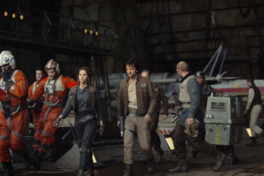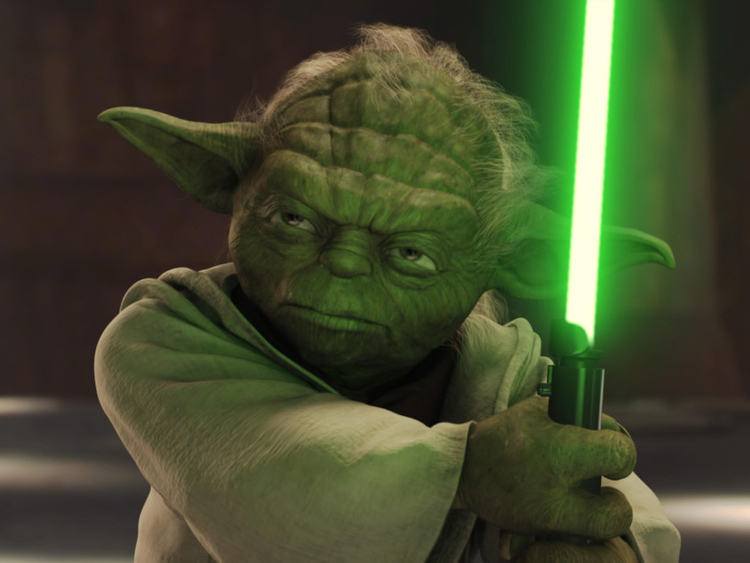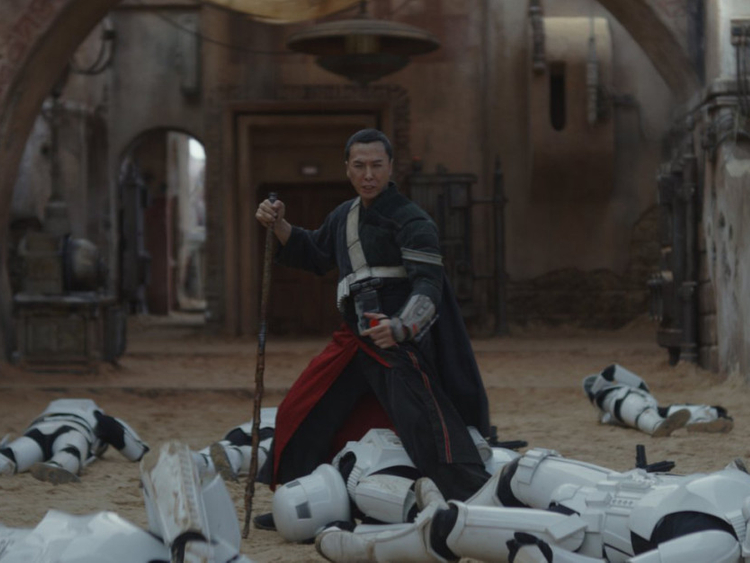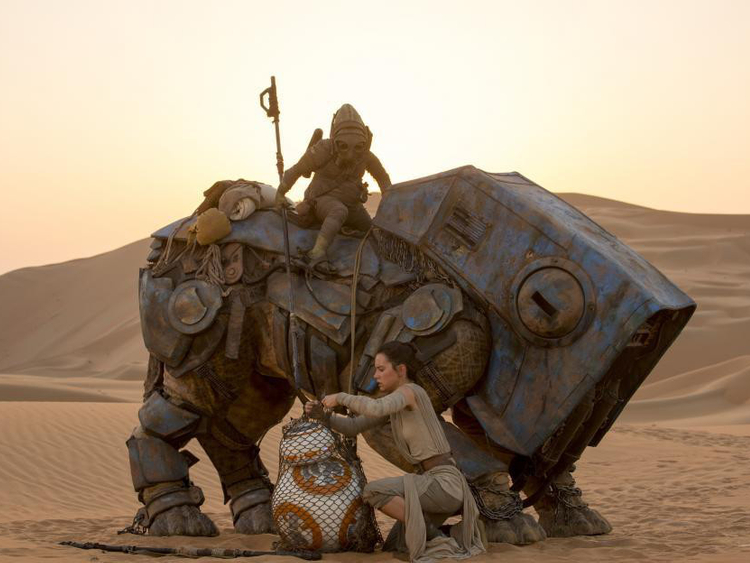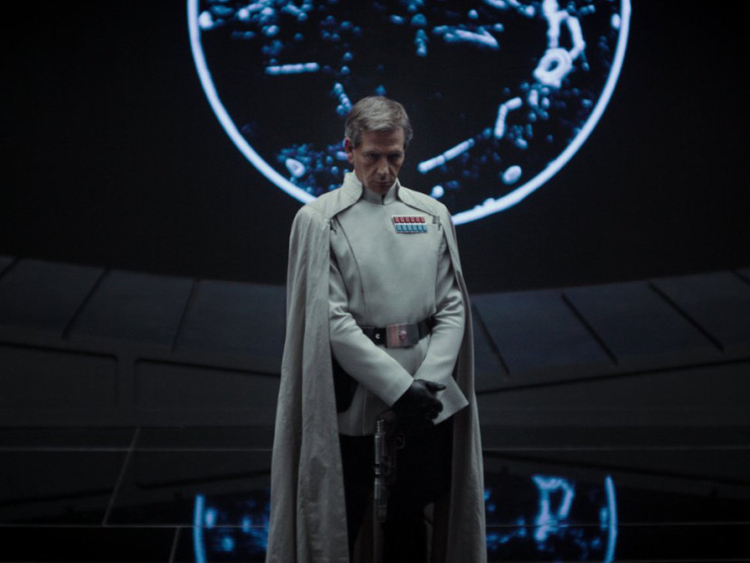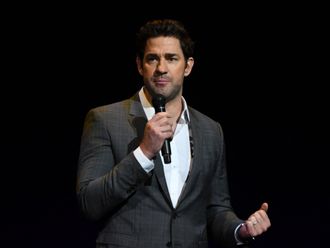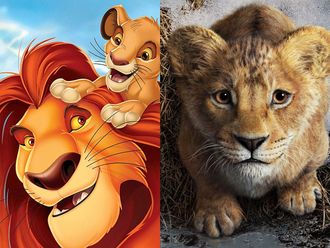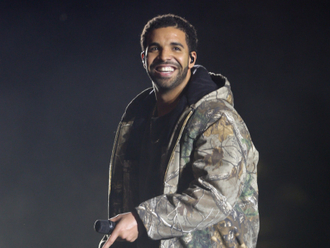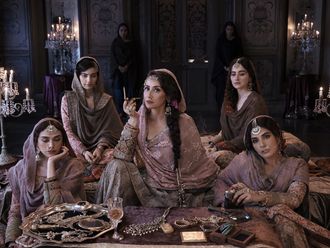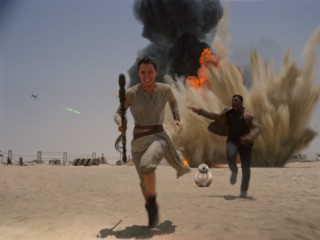
How far has Star Wars penetrated our culture, our language, our frames of reference? The president of the European Commission, Jean-Claude Juncker, reportedly dismissed Theresa May as someone who is “on a different galaxy” when it comes to Brexit negotiations.
Well, yes, although exactly how far, far away remains to be seen. That was an easy pop-culture trope to reach for — and I like to think that Jean-Claude had in the back of his mind the free trade and tax dispute that begins The Phantom Menace — although Theresa and Jean-Claude each see their adversaries as Darth Vader, presiding over an evil and superannuated empire, always likely to strike back against righteous resistance.
As fans celebrate the 40th anniversary of Episode IV: A New Hope — as it was then not known — for my generation, indulging in nostalgic reminiscence about the first time we saw this gigantic event movie — in an era when event movies were a relatively exotic rarity — has become a subsidiary pleasure.
For me, it was as a teenager at a shopping mall cinema in Freeport, Maine, if memory serves, in August 1977, with my cousins and their friends on a summer trip.
I was saucer-eyed, awestruck and faintly delirious about it — as well as being insufferable about having seen the film before it opened in Britain. In my innocence and ignorance and clueless Britishness, I even pronounced the title with the emphasis on the second monosyllable, Star Wars, before I realised that it should be said with the earlier inflection, Star Wars.
Some years ago, Bafta held a surreal reception at Windsor Castle, at which the Queen, the Duke of Edinburgh, the Duke of Kent and Prince Michael of Kent were present, mingling with people in the business, including the shy, bearded and soft-spoken figure of George Lucas.
Approaching the great man was hardly less fraught with procedural issues than embarking on idle chit-chat with the Queen. When I was introduced, I gibberingly tried to find ways of talking to him about Star Wars, or alternatively not talking about Star Wars, until Nick James, the editor of Sight and Sound, shrewdly asked if he was enjoying Downton Abbey.
Lucas then launched into a long and detailed discussion of Downton, of which it emerged he was a huge fan, and told me he had been watching a box set of season one with his fiancee in Bermuda. Maggie Smith’s Dowager Countess of Grantham was, of course, his favourite. And that experience opened my eyes to something that fans had long realised: that Star Wars is a soap opera, the biggest, grandest, most intergalactic soap opera in the world.
Two years later, Lucas himself made this point explicit when talking about The Force Awakens, the first Star Wars film over which he did not have direct creative control, saying: “People don’t actually realise it’s actually a soap opera and it’s all about family problems — it’s not about spaceships.”
Just like Dynasty; the dynasty in question being the Skywalkers.
Quite aside from similarities in content, the Star Wars franchise itself has become like a soap opera, in that it is bigger than just a series of sequels. The word “episode”, previously restricted to television or radio shows, has now become part of the title of each Star Wars film.
Episodes VIII and IX are on their way; no one seriously suggests that they will stop there, and there are now auxiliary spin-off movies of which last year’s Rogue One was the first, branded with the Star Wars mythic identity, exploring other parts of the Star Wars universe.
It is a commonplace in movie criticism to talk about the entire Hollywood output from the studio era onward as being effectively one giant, detailed, many-faceted and many-personaed saga, with stars brought into the system to play variants on the same personality, as they change and grow older. In many ways, Star Wars may be achieving this as it proliferates.
When Episode IV came out, its style was widely compared to the Saturday-morning pictures and the unassuming entertainment value of their endless serials. Yet that is now coming true, and the franchise has an actual smallscreen series, The Clone Wars, set in the interim between Attack of the Clones and Revenge of the Sith.
The cinematic influences on Star Wars, from Kurosawa’s The Hidden Fortress and Ford’s The Searchers, have been endlessly picked over. Lucas himself acknowledged jidaigeki, the Japanese genre of samurai period dramas, from which he sculpted the word “Jedi”.
TV dynamics
But perhaps the dynamic of TV soap is just as important. Darth Vader himself, concealed in his quasi-Nazi cloak and helmet that is part of his medical support system, is a complicated figure of strength, vulnerability and shame. He could have come directly from a soap.
In fact, the figure with the bandaged face, who is later revealed — and possibly transformed — as someone who has a great emotional claim on the story’s main participants, is a classic soap move.
Downton itself had a bandaged character: the mysterious Canadian airman who was recuperating from his war wounds in Downton and claimed to be related to the family. Oddly, his character was written out of the show without revealing himself. In the classic US soap Days of Our Lives, one returning character, Philip Kiriakis, a US Marine Corps veteran, removes bandages from his face in a court scene to much astonishment. Who is this? His identity is disputed but proved with DNA testing. The “bandaged face” trope is a classic way of withholding a character from the action and generating tension around his secret.
Then there is the issue of the “evil” father and his relationship with his son. Vader is Luke’s father. It is the ultimate narrative twist. How to reconcile his evil personality with the inescapable fact of biology and the resulting claims on Luke’s loyalty?
In American soaps this idea is set up again and again using the brutal and often crass idea of rape. The bad father is a rapist, whose crime results in an innocent child, and a narrative arc that can be kept going over many episodes and even seasons. This, for example, is a plot in General Hospital, in which one character, Stavros Cassadine, is the father of Nikolas Cassadine, having raped another character, Laura Spencer.
The idea recurs often in soaps. Of course, rape is quite alien to Star Wars — Anakin Skywalker and Princess Padme were in love when Luke and Leia were conceived. But Anakin’s destiny is to fall to the dark side, and this is certainly not Padme’s destiny. It is not assault, but his fatherhood assumes a retrospective moral irony, a soapily tragic tainting.
The notion of siblings being attracted, or accidentally having been involved in a love affair, is also a time-honoured soap storyline, involving as it does transgression and a form of unresolved sexual tension. Luke and Leia would appear to be romantically involved — that is, until the facts of their relationship are made plain.
Again, Star Wars is not about the ugly business of grown-up sexual anxiety and the embarrassment is easily swept away, perhaps because the romance was so demure in the first place. But it is a distant cousin to those outrageous sibling-sex nightmares that are such a big deal in British soaps: half-siblings Rhys Ashworth and Beth Clements, and twins Sienna Blake and Dodger Savage in Hollyoaks; sister and brother Georgia and Nat Simpson from Brookside. There is then the love triangle of Han Solo, Leia and Luke, albeit a love triangle of the friendliest sort. This is the sort of tension that would fuel a soap over many episodes.
Take, for instance, Elena Ramos, daughter of Ewing family cook in Dallas, who gets involved with both Christopher Ewing, the adopted son of Bobby Ewing, and John Ross, son of JR. Star Wars takes that kind of thorny entanglement but sweetens it and makes less explosive, because the higher cause defuses sexual rivalry.
This brings us to the question of class. Class difference and indeed race difference is meat and drink to soaps, although in Star Wars, the issue can be tactfully represented with robots and extraterrestrials. C3PO and R2D2 are often seen as versions of Kurosawa’s peasants from The Hidden Fortress — and so they are.
But they are also servants, and rather British; they are below-stairs figures from a soap. Britain’s The Forsyte Saga was big in the US in the 60s; similarly Upstairs Downstairs in the 70s and, of course, Downton in our own time. C3PO is a little bit Jeevesy, and like any number of Britsoap footmen. That brings me to the classic Downton-Star Wars crossover, which I didn’t quite have the nerve to suggest to Lucas: it’s something that combines romantic adventure and class transgression. In Downton, Allen Leech plays Tom Branson, the family’s feisty Irish chauffeur, who manages to fall in love with his passenger, Lady Sybil Crawley, played by Jessica Brown Findlay. It reminds me of Han Solo at the controls of the Millennium Falcon, meeting cute with Princess Leia.
Now, Han Solo is going to be represented as a young man by Alden Ehrenreich in a forthcoming spin-off film, currently in production and due in 2018.
The Star Wars saga is turbocharged in a way that smallscreen soaps generally aren’t: it can go backwards as well as forwards — although part of the problem with the prequel trilogy was that it denied the franchise the forward narrative propulsion that is the driving force of soaps. We can only hope that when Episode VIII of the saga, The Last Jedi, arrives in December, it doesn’t reveal Episode VII to have been, like the ninth season of Dallas, all a terrible dream.



